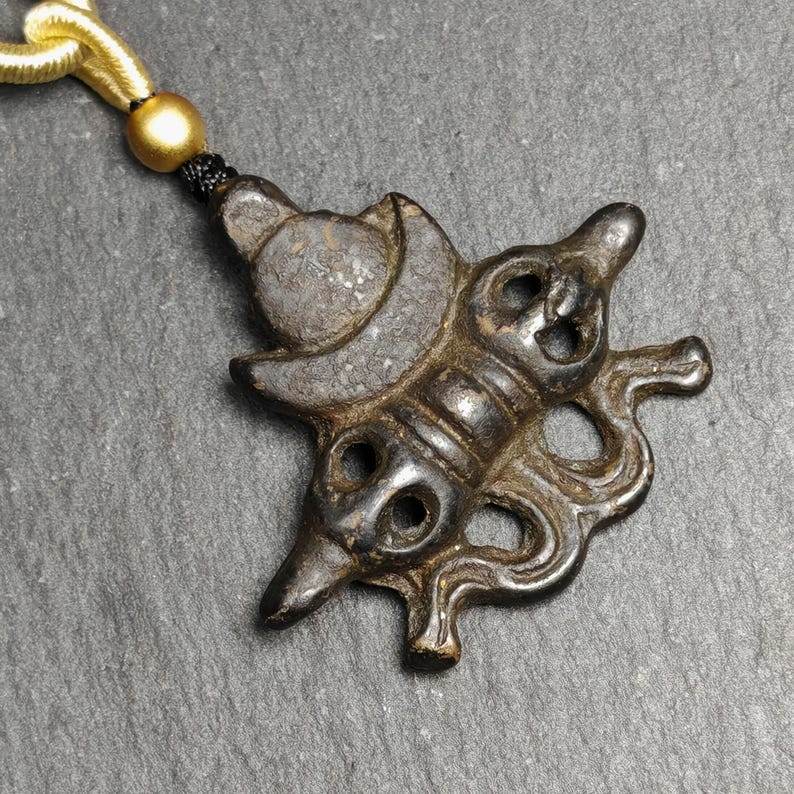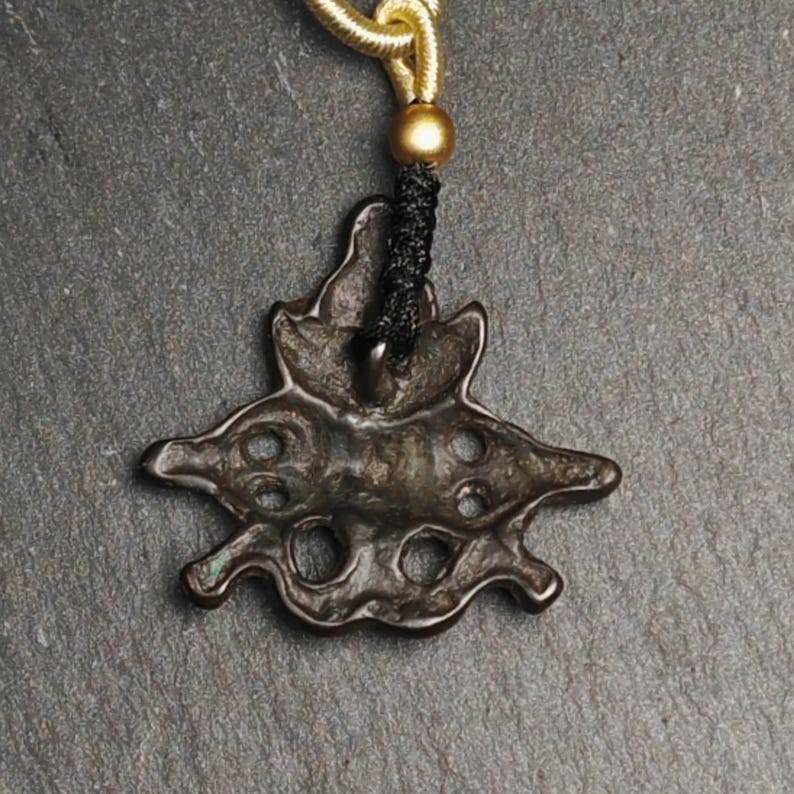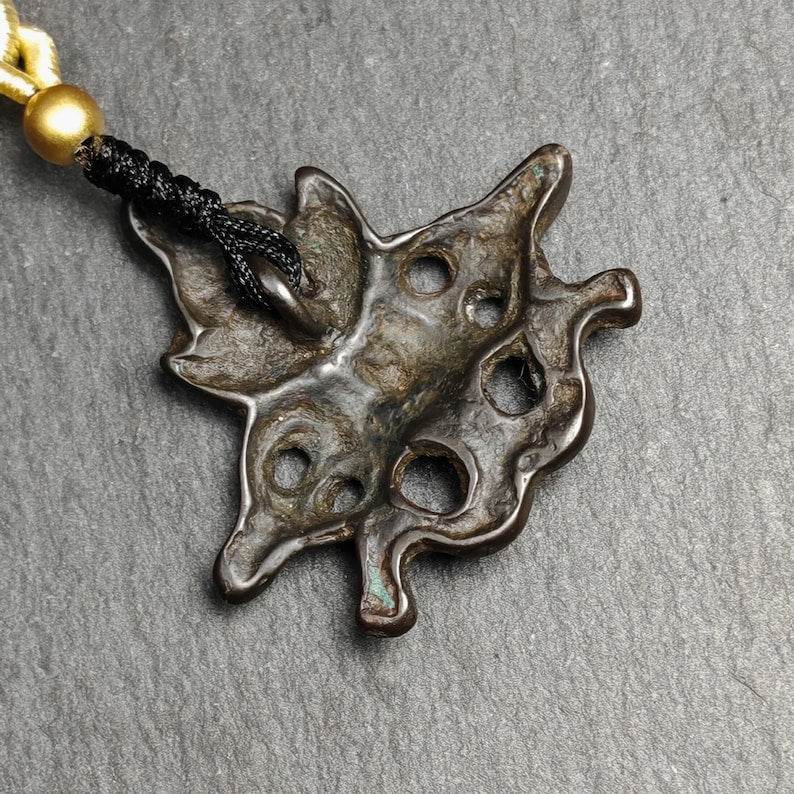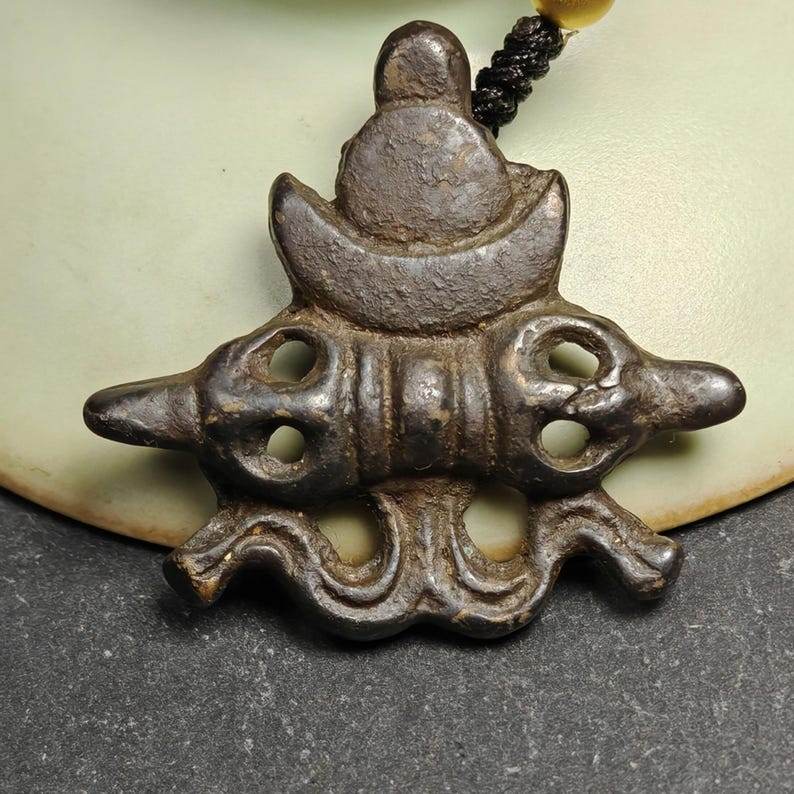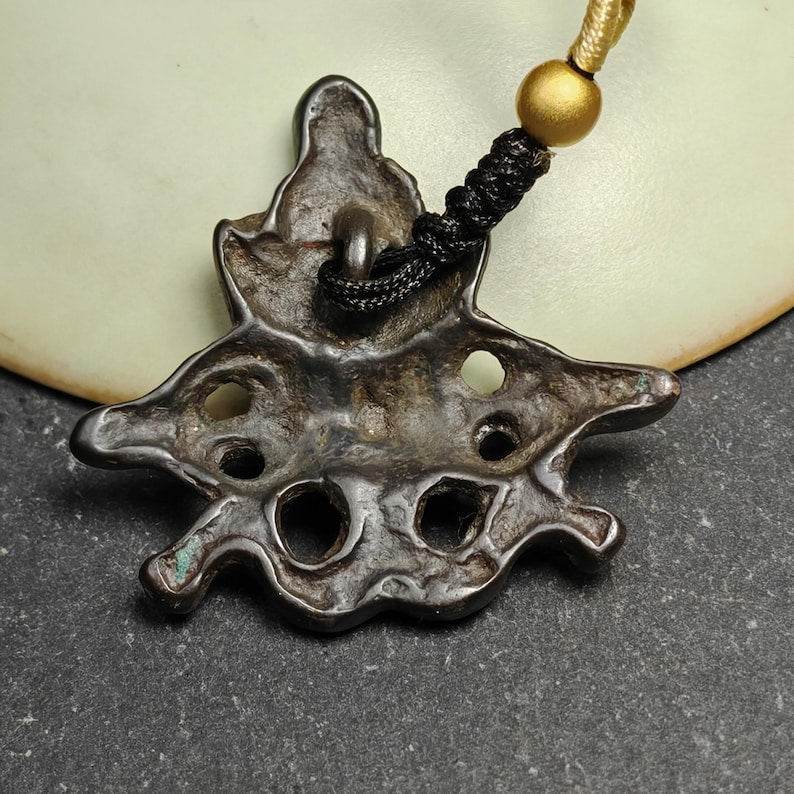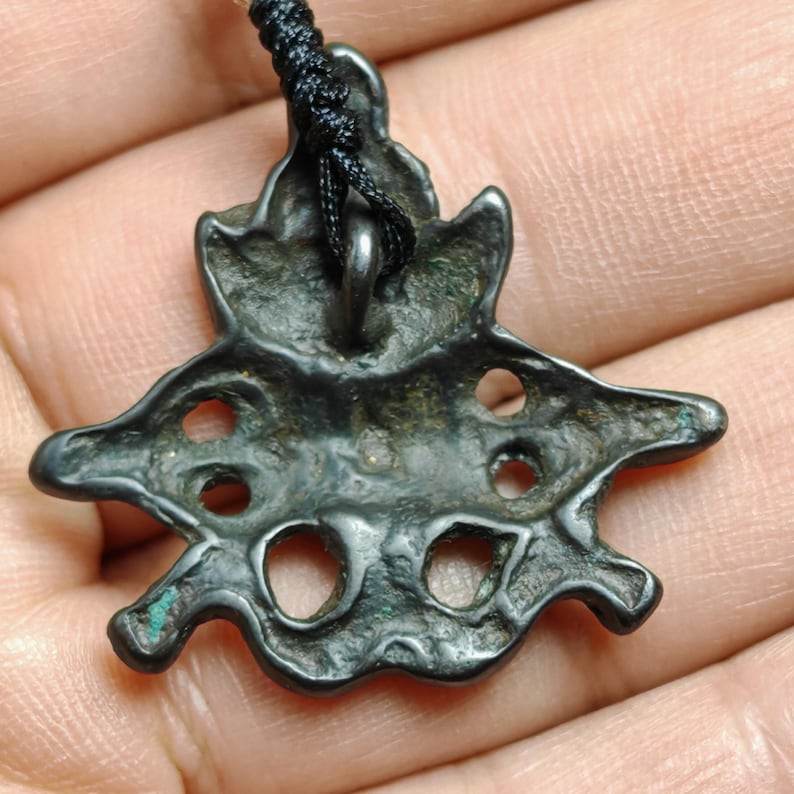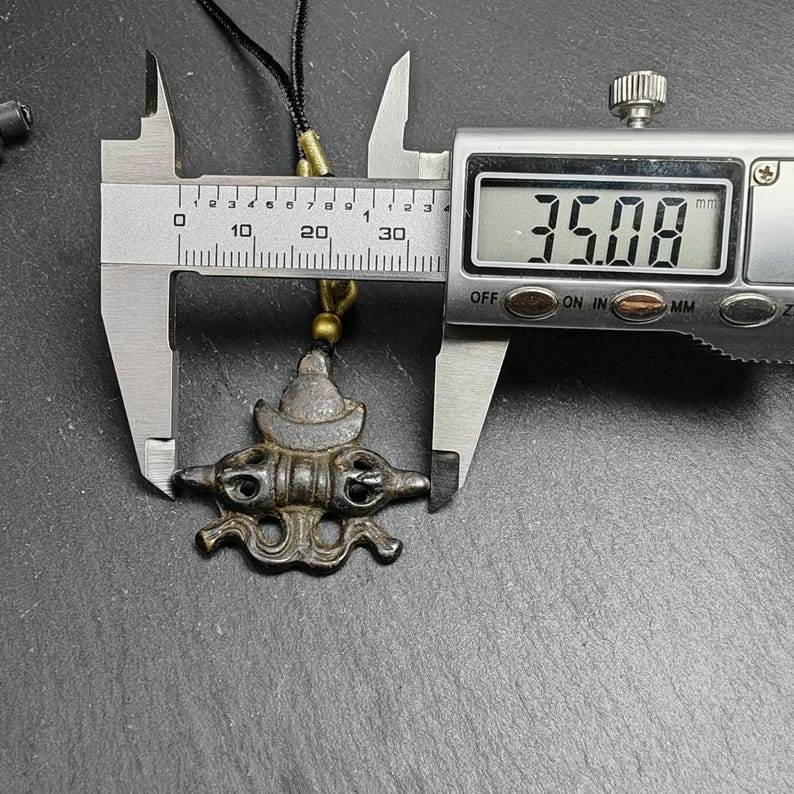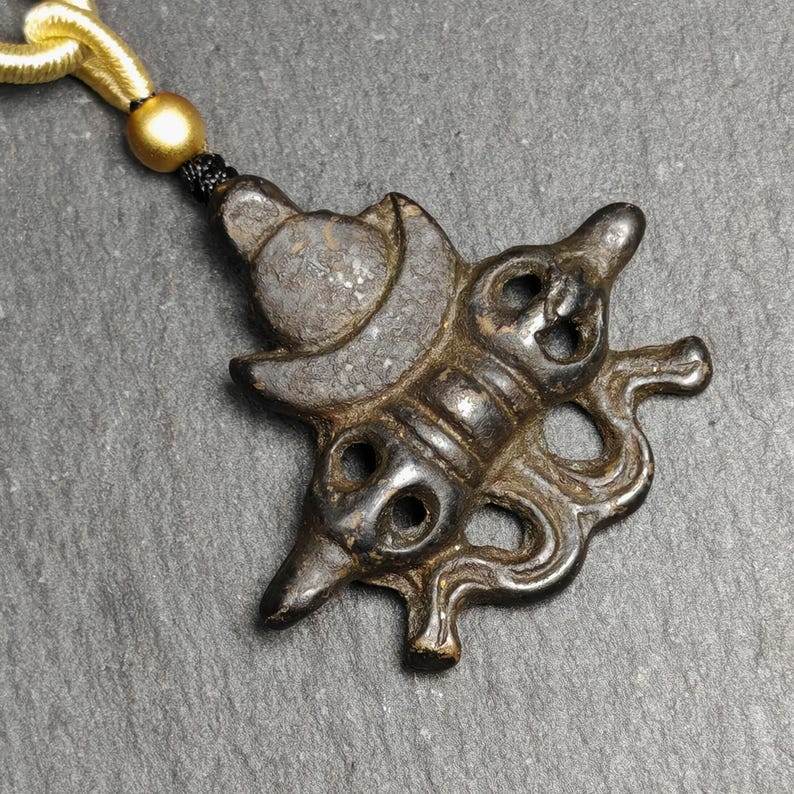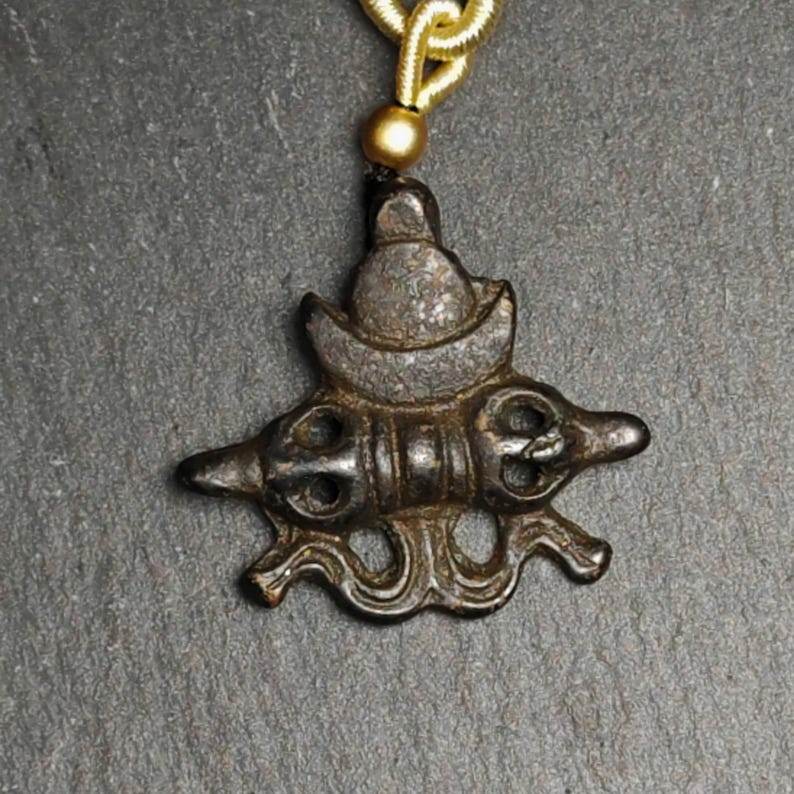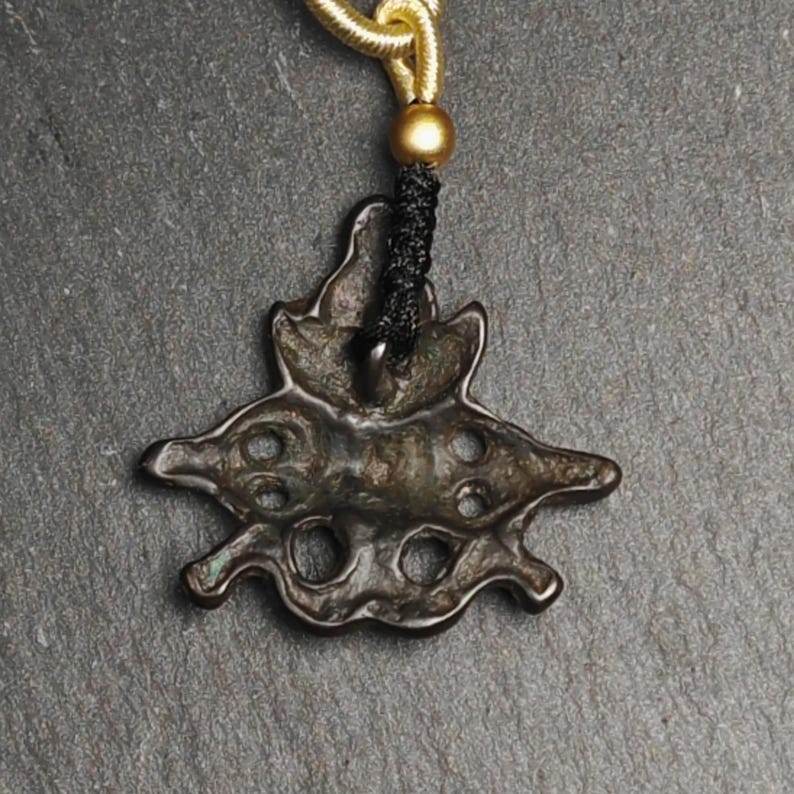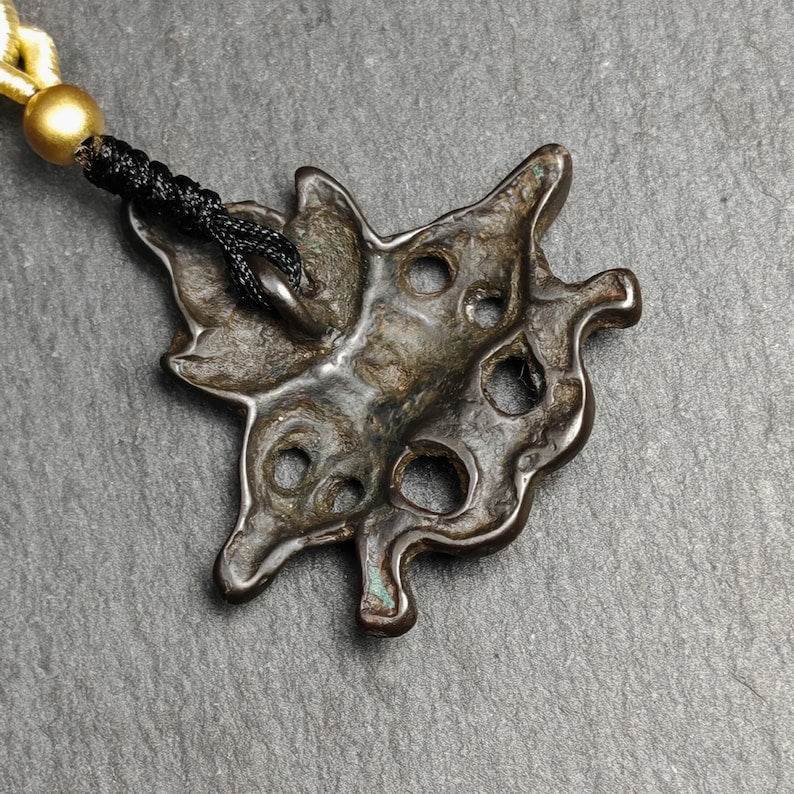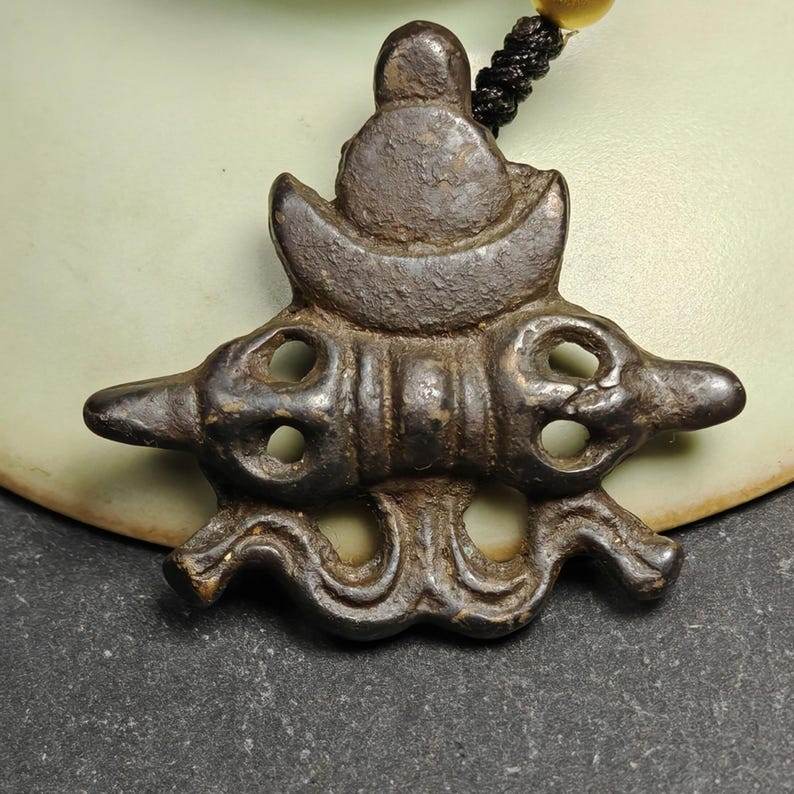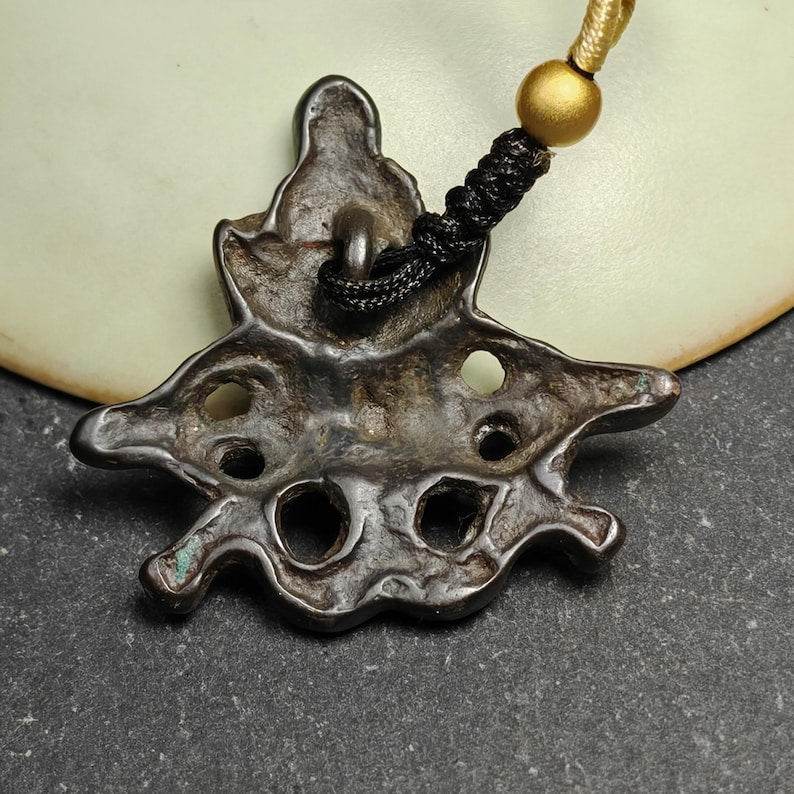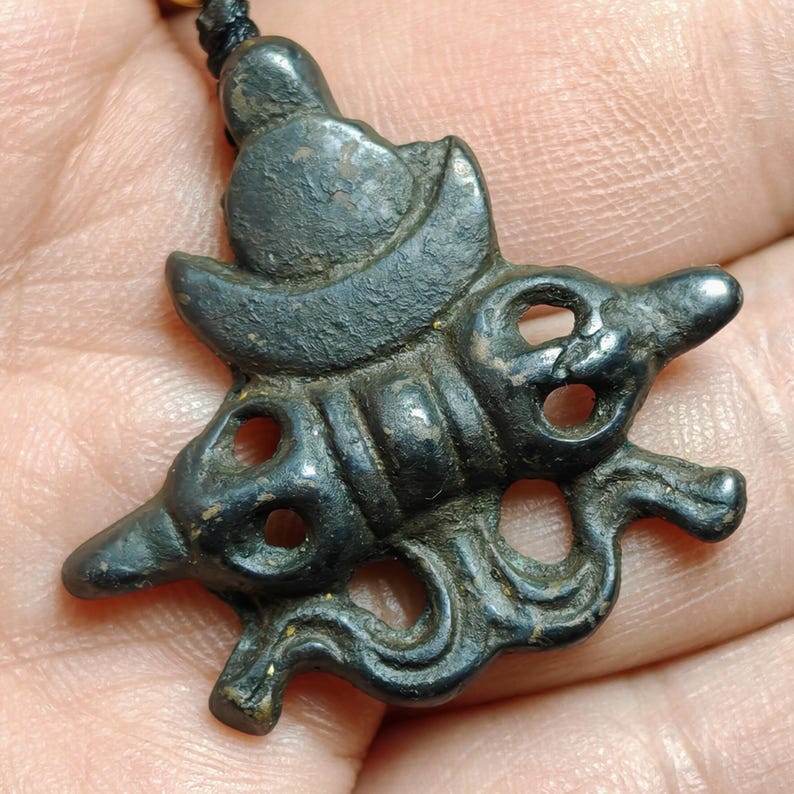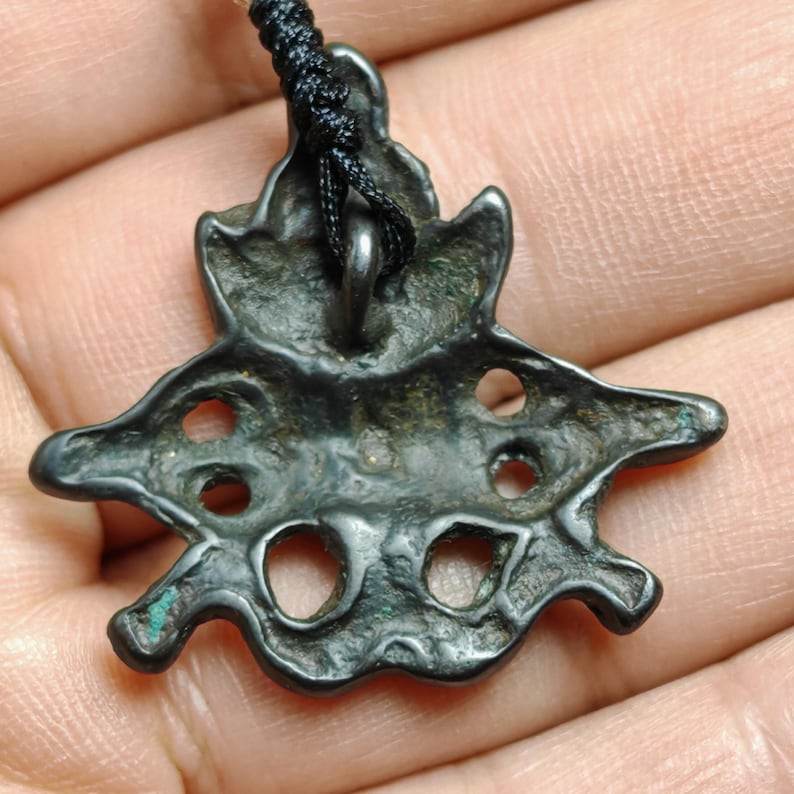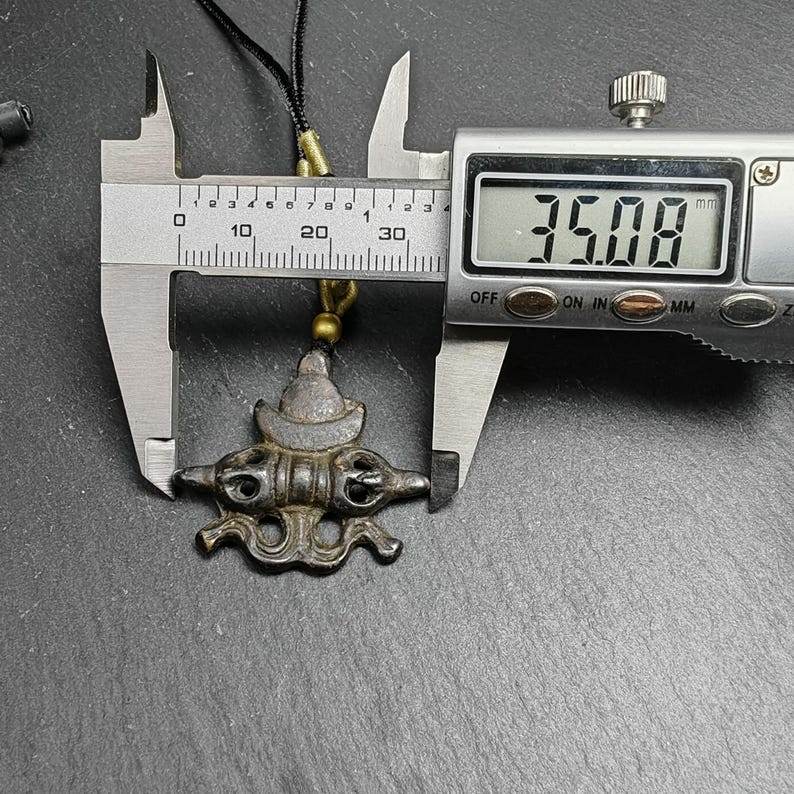Mani Jewel and Vajra Amulet
Mani Jewel and Vajra Amulet
Não foi possível carregar a disponibilidade de recolha
ONLY 1,UNIQUE
Discover the timeless beauty and spiritual significance of our Gandhanra Antique Tibetan Buddhist Amulet, a remarkable piece that embodies the essence of ancient tradition.
This exquisite Mani Jewel Badge/Wish Fulfilling Cintamani Pendant is over 80 years old and was lovingly collected from the historic Gengqing Monastery in Tibet.
Crafted from thokcha, its captivating design captures the mystical allure of the mintamani, symbolizing abundance and fulfillment of wishes.
Each amulet holds a story, making it not just a piece of jewelry, but a cherished talisman that connects you to the rich cultural heritage of Tibetan Buddhism.
Wear this enchanting pendant as a reminder of your aspirations, or gift it to someone special on their journey towards enlightenment.
Details
100% Handmade
Pendant material:thokcha
Pattern: Cintamani
Height:33mm / 1.3 inches
Width: 35mm /1.4 inches
Comes with a adjustable cord.
ABOUT WISH-FULFILLING CINTAMANI or MANI JEWEL
Cintamaṇi (Sanskrit; Devanagari: चिंतामणि; Chinese: 如意寶珠; Pinyin: Rúyì bǎozhū; Romanji: Nyoihōju), also spelled as Chintamani (or the Chintamani Stone), is a wish-fulfilling jewel within both Hindu and Buddhist traditions, said by some to be the equivalent of the philosopher's stone in Western alchemy. It is one of several Mani Jewel images found in Buddhist scripture.
In Buddhism it is held by the Bodhisattvas (divine beings with great compassion, wisdom and power) Avalokiteshvara and Ksitigarbha. It is also seen carried upon the back of the Lung Ta (wind horse) which is depicted on Tibetan prayer flags. By reciting the Dharani (small hymn) of Cintamani, Buddhist tradition maintains that one attains the Wisdom of Buddha, able to understand the truth of the Buddha, and turn afflictions into Bodhi. It is said to allow one to see the Holy Retinue of Amitabha and assembly upon one's deathbed. In Tibetan Buddhist tradition the Chintamani is sometimes depicted as a luminous pearl and is in the possession of several of different forms of the Buddha.
Within Hinduism, it is connected with the gods, Vishnu and Ganesha. In Hindu tradition it is often depicted as a fabulous jewel in the possession of Vishnu as Kaustubha Mani or as on the forehead of the Naga king called as Naga Mani or on the forehead of the Makara. The Yoga Vasistha, originally written in the 10th century AD, contains a story about the cintamani.The Hindu Vishnu Purana speaks of the "Syamanta jewel, bestowing prosperity upon its owner, encapsulates the Yadu clan system".The Vishnu Purana is attributed to the mid-first millennium AD.
A maṇi-jewel; magical jewel, which manifests whatever one wishes for (Skt. maṇi, cintā-maṇi, cintāmaṇi-ratna). According to one's desires, treasures, clothing and food can be manifested, while sickness and suffering can be removed, water can be purified, etc. It is a metaphor for the teachings and virtues of the Buddha. ... Said to be obtained from the dragon-king of the sea, or the head of the great fish, Makara, or the relics of a Buddha.
A Mani Jewel (Chinese: 摩尼珠; pinyin: móní zhū; Japanese: mani ju) refers to any of various jewels mentioned in Buddhist literature as either metaphors for several concepts in Buddhist philosophy or as mythical relics, such as the wish-fulfilling cintamani as well as metaphorical devices to illustrate several ideas such as Buddha-nature and Śūnyatā.
